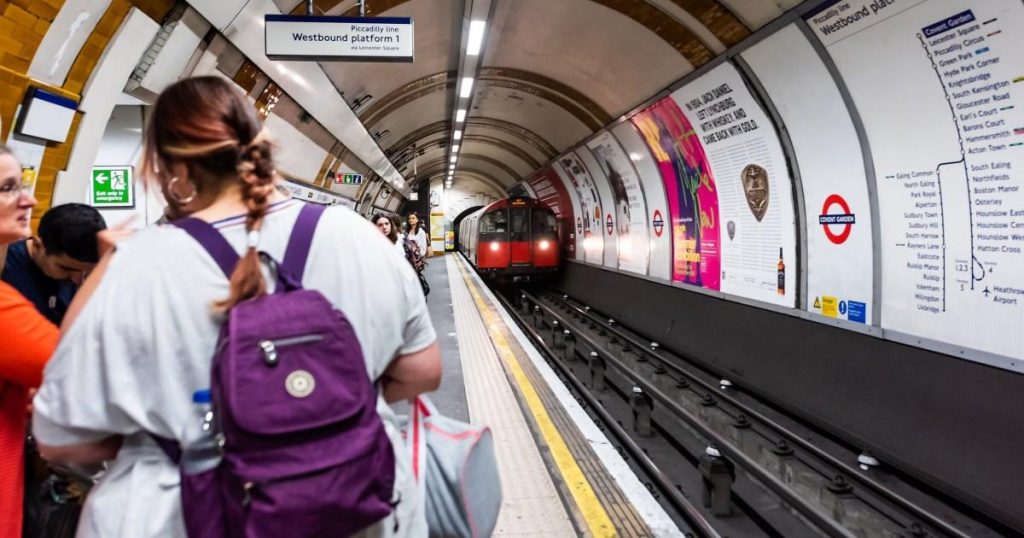Paragraph 1: AI on the London Underground: Enhancing Passenger Safety
Transport for London (TfL) is embracing artificial intelligence (AI) to bolster passenger safety on the London Underground, commonly known as the Tube. Following successful trials on the Docklands Light Railway (DLR) and at Willesden Green Underground station, TfL is prioritizing the implementation of AI-powered CCTV systems across the Tube network. This technology is designed to detect objects on the tracks, including individuals who may have fallen or intentionally entered the track area, while effectively differentiating these occurrences from the regular movement of trains. This real-time detection capability will enable station staff to respond swiftly to potential incidents, mitigating risks and preventing tragedies.
Paragraph 2: AI-Powered CCTV: A Detailed Look
The core of this safety-enhancing technology lies in the AI-powered CCTV system. This system leverages advanced algorithms to analyze video feeds from security cameras strategically positioned within stations. By intelligently distinguishing between normal train operations and unusual occurrences on the tracks, the AI system can identify potential hazards with remarkable accuracy. When an object, such as a person, is detected on the tracks, the system immediately alerts station staff. This real-time notification allows for a rapid response, potentially saving lives and preventing serious injuries. The system’s ability to ignore the constant motion of trains is crucial, as it eliminates false alarms and ensures that staff can focus on genuine emergencies.
Paragraph 3: Trial Implementations and Future Expansion
The AI-powered CCTV system has already undergone rigorous testing on the DLR at Custom House station. The DLR operator, Keolis Amey Docklands, has conducted a successful trial using a solution called "CCTV AI trial," demonstrating the system’s efficacy in a real-world environment. The trial has shown that the system can effectively detect and identify objects on the tracks, accurately differentiating them from the usual train movements. Building upon this success, TfL is now prioritizing the expansion of this technology to the wider London Underground network, aiming to enhance passenger safety across all Tube lines. The positive results from the DLR trial pave the way for a comprehensive rollout, promising a significant improvement in safety protocols.
Paragraph 4: Broader Applications of AI in Transportation
The application of AI extends beyond passenger safety on the Tube. Similar technologies are being employed in other transportation systems to address various challenges. In Manchester and Lyon, for instance, a combination of cameras, sensors, and AI is used to monitor overhead tram lines, preventing potential issues and ensuring smooth operations. This highlights the versatility of AI in optimizing transportation infrastructure and enhancing safety across different modes of transport. The use of AI in these diverse applications demonstrates its potential to revolutionize the transportation sector, offering innovative solutions to complex problems.
Paragraph 5: Ethical Considerations and London’s AI Ambitions
As AI becomes increasingly integrated into our lives, ethical considerations surrounding its deployment are paramount. Arnaud Julien, the chief innovation officer at Keolis, emphasizes the company’s commitment to prioritizing ethics, cybersecurity, and personal data protection in its AI initiatives. This focus on responsible AI development is crucial to ensuring public trust and mitigating potential risks associated with the technology. Meanwhile, London Mayor Sadiq Khan has positioned London as a leading hub for AI and technological innovation. His London growth plan aims to attract significant investment in these areas, fostering a dynamic ecosystem for AI development and implementation.
Paragraph 6: Recent Incidents and Contextual Relevance
The increased focus on passenger safety comes in the wake of several incidents on the London Underground. One notable case involved Lord Blunkett, a blind Labour peer, who fell between the train and the platform while traveling on the District line. This incident highlighted the potential dangers present on Tube platforms and underscored the need for enhanced safety measures. The introduction of AI-powered CCTV systems aligns with this need, providing a proactive approach to preventing similar incidents from occurring. In a broader context, the UK government has launched the "AI Opportunities Action Plan" to promote the development and adoption of AI technologies across various sectors, including transportation. This initiative aims to solidify the UK’s position as a global leader in AI, ensuring that the country remains at the forefront of technological innovation.


